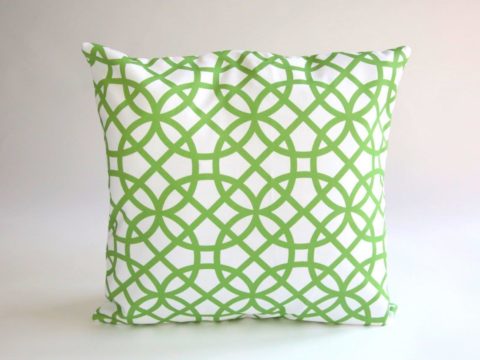Thomas Cromwell and the Downfall of Anne Boleyn
Chapter 4 : Plotting Anne's Downfall
Having resolved upon the means of securing Anne’s downfall, Cromwell began to quietly gather evidence which would secure her downfall. It is likely that he either bribed some of the Queen’s ladies, or placed spies in her household. The tales that they reported, most of which were innocent enough in themselves, were soon twisted into damning evidence. All of this was conducted with the greatest discretion. Anne knew nothing of the horror that was about to unfold, and even the King seems to have been kept in ignorance until Cromwell judged that he had a suitably persuasive case to take to him.
Then, in the last days of April 1536, events suddenly accelerated. Cromwell returned to court after his week’s absence and at once sought an audience with the king. There is no record of what passed between them, but the chief minister must have imparted his suspicions (and evidence) of the queen’s infidelity. The king, whose attitude towards his wife had until now vacillated between hostility and passion, turned suddenly and irrevocably against her. He ordered Cromwell to gather all of the evidence he needed to secure a conviction.
Among those whom Cromwell questioned was Mark Smeaton. He invited the naïve young man to his house at Stepney and, it is rumoured, tortured him into a confession. Smeaton admitted to having had sex with the Queen, and dutifully provided Cromwell with the names of other members of her circle with whom she had conducted illicit liaisons. According to the Spanish Chronicle, Cromwell wrote at once to the King, enclosing Mark’s confession. When Henry read the letter, he was greatly agitated but ordered that everything should proceed as normal for the traditional May Day tournament, which was to be held at Greenwich Palace.
The first day of May 1536 began like any other for Queen Anne. She had not been informed of her musician’s arrest, and had apparently not yet noticed his absence. The King, ever the master of dissimulation, showed no hint of his inner turmoil and apparently ‘gave himself up to enjoyment.’ Halfway through the jousts, a message was passed to Henry who, to everyone’s astonishment, left the tournament with great haste, accompanied by a handful of courtiers.
Everything now happened with bewildering speed. Henry Norris, who was leading one of the teams in the jousts, was told to accompany the King to London at once. As they rode towards Westminster, a horror-struck Norris was accused of committing adultery with the Queen. He fiercely denied the charge, even though Henry – who still cherished some affection for his long-standing friend and servant – offered him a full pardon if he confessed. He was duly taken to the Tower, where he joined Mark Smeaton. Meanwhile, Cromwell had taken the precaution of blocking access to the King so that none of Anne’s supporters could plead on her behalf – or, indeed, their own.
Other arrests soon followed – including that of the Queen herself, who was taken to the Tower on 2nd May. According to Wriothesley’s chronicle, which was written shortly after the event, Cromwell himself had accompanied her there. She was joined on the same day by her brother, George. The next arrest came two days later and was altogether unexpected. William Brereton was, like Norris and Weston, one of the king’s personal servants, being a Groom of the Privy Chamber. The fact that he became implicated in the scandal that was unfolding at court is one of the clearest indications that Cromwell was its architect.
Brereton was keenly aware of his own status and ran his affairs in a high handed manner. He dominated the monasteries in Cheshire and had blocked Cromwell’s attempts at reform in the region. He also covered up, and may even have encouraged, lawlessness among the marcher lordships where he was steward. Cromwell was determined to bring this troublesome subject to heel, and his plot against the Queen presented him with the perfect opportunity.
Francis Weston joined his fellow suspects in the Tower on 5 May, along with Thomas Wyatt, a former favourite of Anne, and – three days later – Sir Richard Page. The latter two were both close associates of Cromwell and he was almost certainly not responsible for their arrests. Indeed, he made it his business to have them released. That both men escaped reprisal proves not just their association with Cromwell, but the extent to which he dictated the course of Anne’s downfall and that of her followers.
Even though Cromwell had amassed enough evidence to have Anne arrested, he was taking no chances. He therefore appointed ladies to attend Anne in the Tower and actively spy on her there. He also instructed the Constable, Sir William Kingston, to send regular reports of her conduct, and monitored all of her correspondence. There was found among Cromwell’s papers a letter from Anne to Henry, written from the Tower four days after her arrest.
It is a bold statement of her innocence in which she upbraids her husband for bringing her to this state. She ranted against Henry’s ‘unprincely and cruel usage of me’, and declared that if he persisted in this ‘infamous slander’ then she hoped God would pardon his ‘great sin’. Cromwell endorsed the letter: ‘To the King from the Lady in the Tower’. Whether he ever showed it to his royal master is not known. He might have judged that, inflammatory though it was, it was better to keep such a heartfelt avowal of innocence from his royal master.


